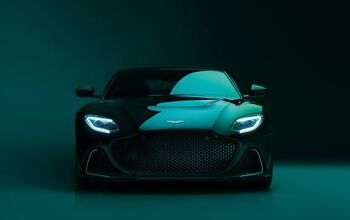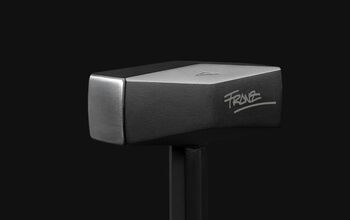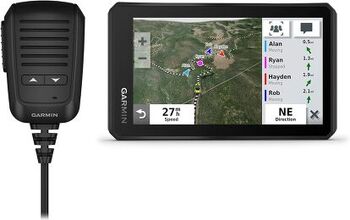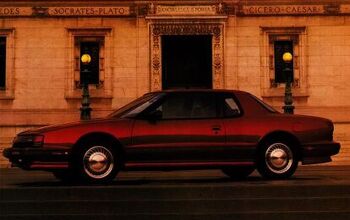California Grants Cruise and Waymo Expansion Approval

Self-driving vehicles have become a contentious issue in San Francisco. The city currently serves as a public testing ground for over 500 autonomous cars being fielded by Alphabet’s Waymo and General Motors’ Cruise. But local residents have been losing patience with the vehicles, with numerous reports that they’ve been misbehaving in traffic.
While public complaints seemed to be endangering the companies’ ability to expand operations, the California Public Utilities Commission (CPUC) voted 3-to-1 on Thursday to do just that. This opens the door to allow Waymo to begin charging for autonomous taxi services, something Cruise was already doing there, and accelerate their respective AV programs within California.
The decision permits Cruise and Waymo to charge for driverless rides at all hours in San Francisco and came at the end of nearly seven hours of testimony from hundreds of supporters and critics possessing extremely different views on autonomous driving.
Supporters of the technology believe it will someday eliminate human error, resulting in totally safe roadways. This has also been the position of automotive and tech companies hoping to promote self-driving vehicles. They’re envisioning a future where for-hire automobiles whisk residents around town without a driver and never crash.
Dozens of them stood outside the Public Utilities Commission State of California building in yellow shirts, holding signs that pointed out that 40,000 lives a year were lost in traffic accidents. The implication is that the number could have been lower had vehicles been automated.
However, opponents have pointed out that the vehicles in question do occasionally crash and have repeatedly been caught having difficulties navigating city streets. This is seen as undesirable, especially if their widespread use likewise eliminates driving jobs or the vehicles are left puttering around seeking customers and encouraging congestion.
According to the San Francisco Chronicle, their ranks were larger than those who arrived to show support for Waymo and Cruise. They were also joined by city officials, who have become increasingly critical of self-driving vehicles being tested and the fact that the companies don’t furnish basic information to regulators. Questions about exactly how many vehicles each company is fielding and how often they get hung up in traffic often go unanswered, encouraging city officials to begin tracking incidents themselves in 2022.
As of June, local agencies have tabulated roughly 600 “disruptive incidents” concerning autonomous vehicles. These include vehicles that have stalled at intersections and blocked traffic, failed to navigate construction zones, fatally struck dogs, and the occasional collision with another automobile.
In a presentation from last week, representatives from the San Francisco Fire Department, San Francisco Police Department, and San Francisco Municipal Transportation Agency stated that its estimate of 600 incidents involving misbehaving AVs was likely an underestimate. The SFFD seemed particularly perturbed, noting 50 instances where Cruise and Waymo vehicles had blocked the entrance to fire stations, struck (or nearly struck) their vehicles, personnel, or equipment, and acted unpredictably when they were attempting to address nearby emergency situations.
"Driverless AVs are not ready to scale in San Francisco," the agencies wrote in their collaborative presentation. "Giving Cruise and Waymo authority to expand at their own discretion does not serve public safety.”
Meanwhile, the public has been taking matters into their own hands by placing road cones atop the hood of autonomous test vehicles. Activist campaigns have been encouraging San Francisco residents that are fed up with AVs to simply disable them by blocking the sensor array needed to drive. With no way for the car to remove the traffic cone itself, it simply waits there until a technician drives out to remove it.
With grievances mounting, it seemed like the Public Utilities Commission might have opted against letting the companies expand services. But the group ultimately decided to back Waymo and Cruise in a 3-to-1 vote.
"This technology has the ability to help California meet its clean energy and transportation goals, as these carriers offer service in electric vehicles," Commissioner John Reynolds was quoted as saying by Automotive News before the vote. "AVs also provide people with more transportation options, and have the potential to offer transformative options for those with disabilities."
Claiming AVs would help the blind has been a claim we’ve been hearing since the 2010s. The industry even courted activist groups for the blind to support AVs, offering claims that the vehicles would allow the sightless to drive. But that’s not really possible considering how the technology actually works. It could likewise be argued that having a human behind the wheel of a hired ride would offer blind passengers additional assistance should they need it.
“The CPUC looked the other way on Uber and Lyft,” said San Francisco resident Charles Minster, who opposed robotaxis’ expansion. “All these companies care about are profits. Eliminating human beings means nothing to them. It means less problems. Because as humans, we have to eat, we get sick, we go on strike every once in a while. They don't like that.”
From Automotive News:
The decision comes as companies raise and spend billions on their self-driving technology and bank on expansion. Waymo completed an investment round of $2.5 billion in June 2021, and in 2022, the company expanded public service to Phoenix from San Francisco. It also began testing vehicles in Los Angeles.
"Today's permit marks the true beginning of our commercial operations in San Francisco," said Tekedra Mawakana, co-CEO of Waymo, in a statement. "We're incredibly grateful for this vote of confidence from the CPUC, and to the communities and riders who have supported our service."
General Motors, the majority owner of Cruise, has said the robotaxi company is slated to reach $1 billion in revenue by 2025. Cruise CEO Kyle Vogt told Automotive News in April that "almost all" of the company's energy is directed toward "scaling," including "figuring out how to set up new markets."
GM bought a $2.1 billion equity ownership stake in Cruise in March 2022 and promised another $1.35 billion investment.
"It's important for these companies to actually have this approval," said Akshay Singh, an automotive industries principal at PwC. "It's an important hurdle to cross" because if "one city demonstrates that it's actually safe to deploy robotaxis and safe to operate robotaxis, then it gives confidence to other cities."
Prashanthi Raman, vice president of global government affairs at Cruise, said the CPUC decision allows the company to "challenge an unsafe, inaccessible transportation status quo,” adding that the business would continue working with local authorities, regulators, and “other key stakeholders” as services are expanded.
Though it doesn’t sound as though the city’s emergency and transportation officials are satisfied. At the meetings, they criticized how autonomous test vehicles were non-responsive in situations where a human driver would have easily complied. They’re saying some of the incidents have created dangerous road conditions for the public and have alleged that the companies aren’t working with them as claimed.
[Image: Michael Vi/Shutterstock.com]
Become a TTAC insider. Get the latest news, features, TTAC takes, and everything else that gets to the truth about cars first by subscribing to our newsletter.

A staunch consumer advocate tracking industry trends and regulation. Before joining TTAC, Matt spent a decade working for marketing and research firms based in NYC. Clients included several of the world’s largest automakers, global tire brands, and aftermarket part suppliers. Dissatisfied with the corporate world and resentful of having to wear suits everyday, he pivoted to writing about cars. Since then, that man has become an ardent supporter of the right-to-repair movement, been interviewed on the auto industry by national radio broadcasts, driven more rental cars than anyone ever should, participated in amateur rallying events, and received the requisite minimum training as sanctioned by the SCCA. Handy with a wrench, Matt grew up surrounded by Detroit auto workers and managed to get a pizza delivery job before he was legally eligible. He later found himself driving box trucks through Manhattan, guaranteeing future sympathy for actual truckers. He continues to conduct research pertaining to the automotive sector as an independent contractor and has since moved back to his native Michigan, closer to where the cars are born. A contrarian, Matt claims to prefer understeer — stating that front and all-wheel drive vehicles cater best to his driving style.
More by Matt Posky
Latest Car Reviews
Read moreLatest Product Reviews
Read moreRecent Comments
- Carson D Just don't be the whistleblower who reports on the falsification of safety data. That's a deadly profession.
- Carson D I'd have responded sooner, but my computer locked up and I had to reboot it.
- Todd In Canada Mazda has a 3 year bumper to bumper & 5 year unlimited mileage drivetrain warranty. Mazdas are a DIY dream of high school auto mechanics 101 easy to work on reliable simplicity. IMO the Mazda is way better looking.
- Tane94 Blue Mini, love Minis because it's total custom ordering and the S has the BMW turbo engine.
- AZFelix What could possibly go wrong with putting your life in the robotic hands of precision crafted and expertly programmed machinery?


































Comments
Join the conversation
Good documentary of transportation history in San Francisco called "Moving San Francisco"
"...On Friday night, as the massive Outside Lands music festival was underway in Golden Gate Park, cars operated by Cruise, a division of General Motors, suddenly stopped working and created a traffic jam of as many as 10 robotaxis on Grant Avenue in North Beach. Administrators for Cruise blamed the breakdown on “wireless connectivity issues,’’ due to an overload of cell phone usage at the concert."
...
"'The take-home is a scary revelation in that if cell phone coverage goes out, they can’t communicate with their cars at the same time the city would be trying to maintain order,’ Peskin said. 'If you have an earthquake, they will be sitting like bricks on your street and there is no way to communicate with them at the precise moment you need them.'"
From San Francisco Chronicle.